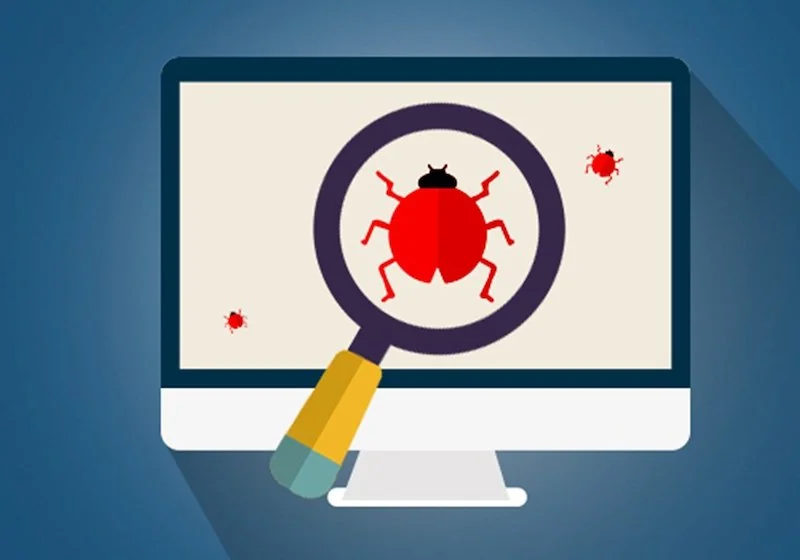Quality assurance (QA) is an integral part of the product development process that startups should incorporate into their development cycle to prevent bugs and defects from reaching the final product. As a product comes together, the discreet blocks of code become an increasingly complicated network of dependencies.
Therefore, as the project progresses, it takes more effort to figure out what the underlying bugs are. Preventative processes like QA help save valuable resources in the long run because the team is able to check that the code works at critical points before the codebase gets too complicated.
As a software development outsourcing company, we believe that QA should be used as a tool for validation and feedback to produce software that meets customer requirements. In this blog, we'll go through what quality assurance is, how to approach the process and its benefits for your startup's overall plan.
Afterward, you'll learn the different use cases of QA and how to integrate them into your product development cycle. With that, you can rest assured that the products you release to your customers uphold the best quality and reliability.
Let's get started!
What is Quality Assurance?
Quality Assurance is a process that focuses on preventing defects and errors in products and services rather than just identifying and fixing them. Proper QA processes and mechanisms take a proactive approach to identify areas of the product or system that could cause issues and address them early on.
QA activities include manual and automated testing, code reviews, and usability tests to ensure the highest quality standards are met. Automated testing is especially beneficial for startups as it can quickly test regression scenarios in a shorter time frame than manual testing.
Applying QA processes to your product development cycle can help you identify potential issues and risks early on, drastically reducing the time and money spent on bug fixes. Ultimately, you realize the highest quality, leading to increased customer satisfaction and a better chance of success in the market.
How Does Quality Assurance Differ From Quality Control?

Quality Control (QC) is a reactive process that focuses on identifying and correcting defects and errors after they have occurred. It involves testing and inspecting products and services to meet established standards and specifications. QC is typically performed at the end of the product development lifecycle, just before the product is released to customers.
Using both QA and QC in your product development cycle will ensure the highest quality of your products and services. QA can help prevent issues while QC tests for any issues that may have been missed during initial testing.
While QA and QC are related, they serve different purposes in the product development lifecycle. QA is a proactive process that focuses on preventing defects and errors from occurring, while QC is a reactive process that focuses on identifying and correcting defects and errors after they have occurred.
By understanding the difference between QA and QC and implementing effective processes, startups can improve the quality of their products and services and meet or exceed customer expectations.
How To Approach The Quality Assurance Process For Your Startup
Creating an effective QA process based on the purpose and complexity of your product or system can help you ensure the highest quality standards. However, outlining a few prerequisites before creating your QA process can help make it more successful.
Also, pre-determining your QA process's roles, responsibilities, and resources is integral to making it more effective and applicable based on your product's specific purpose, use case, and target customer. Here are three essential prerequisites to consider:
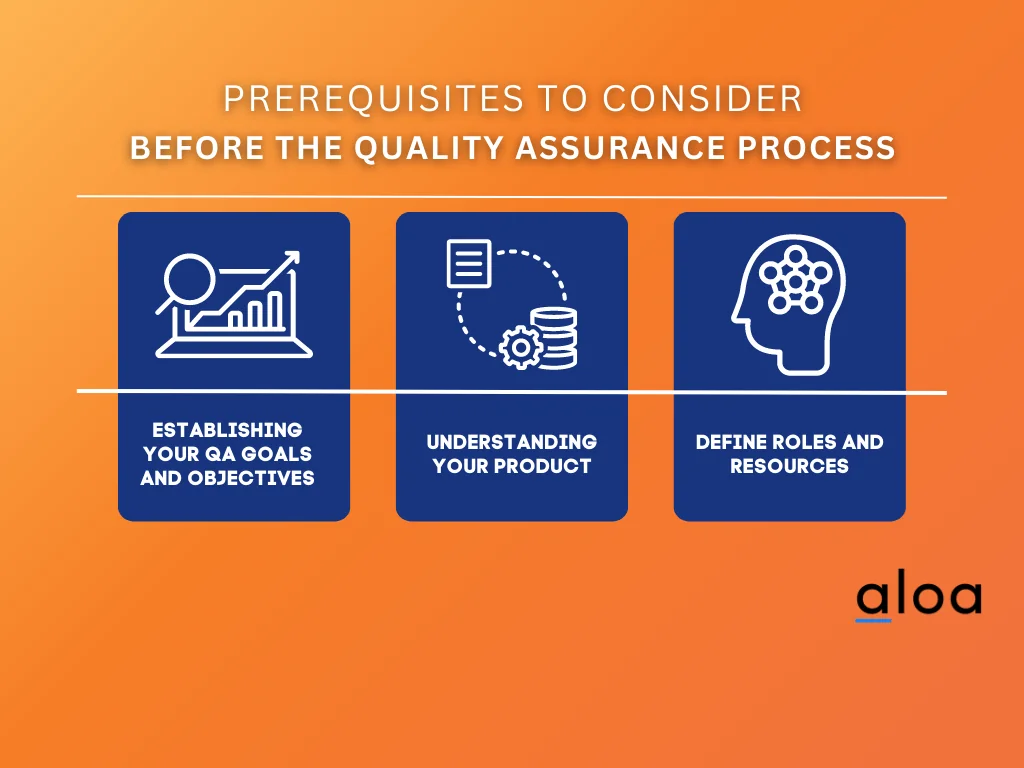
Establishing Your QA Goals and Objectives
Outline what you want to accomplish from your quality assurance process and the metrics you plan on measuring it against. Defining measurable goals and objectives for your QA initiatives can help ensure that you can track progress and report on its success in the long run.
Understanding Your Product
Understanding your product's purpose and use case can help you create better quality assurance strategies. While the process may vary based on the type of product or system you are making, knowing about it would help you successfully identify potential risks and issues beforehand.
Defining Roles and Resources
Pre-determining roles and resources for the QA process can help you determine what tests are required, who will be responsible for running them, and how long it would take to implement them. This would enable you to create a more efficient QA process tailored to your product's needs.
After establishing these initial points, you can use them as your baseline to guide your QA process. Quality Assurance processes can be designed for any product or system. Still, tailoring the process to fit your specific startup's purpose and requirements is essential.
Without first outlining the goals, understanding the product, and defining roles and resources, it isn't easy to create an effective QA process that works. You'll end up with an overly generalized process that is unfocused and inefficient.
From there, you can start applying this QA process while incorporating specific aspects you've outlined previously.
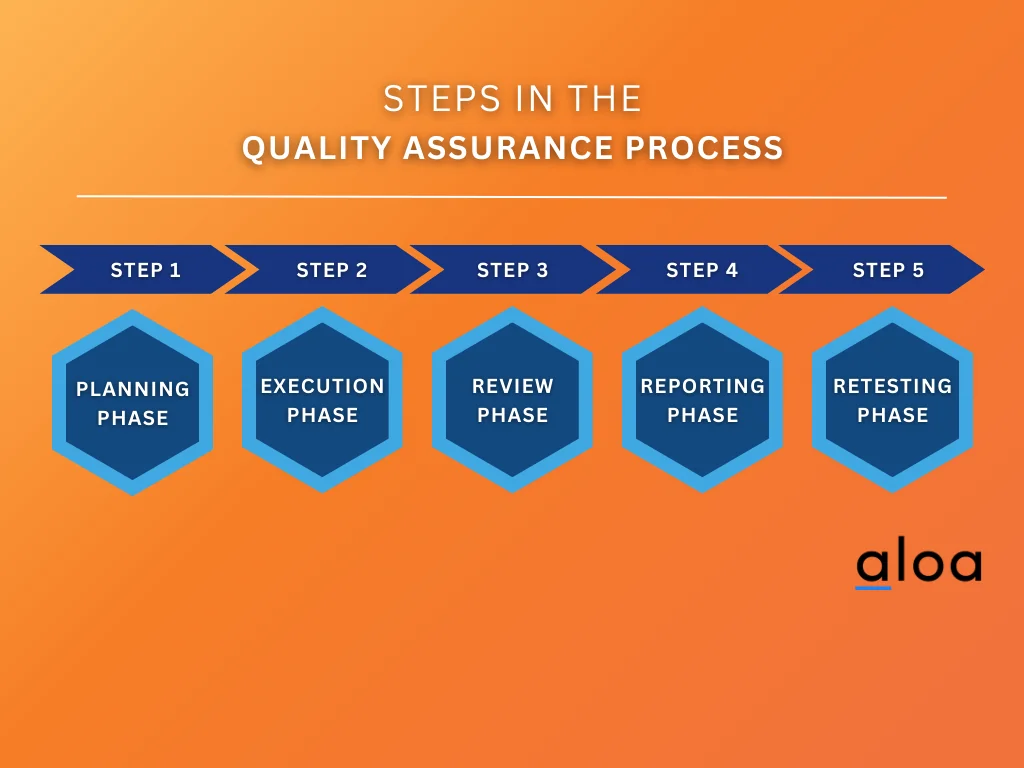
Step 1: Planning
The planning phase involves defining the scope and objectives of the testing process. It includes identifying the test levels, types, techniques, and resources required for testing. In this phase, the QA team will develop a test plan outlining the testing strategy and approach.
Test levels refer to the level at which testing is conducted. Examples of different levels include unit, integration, system, and acceptance.
- Unit test levels are usually conducted with individual components.
- Integration test levels involve determining how different components interact with each other.
- System test levels verify that the system complies with the requirements.
- Acceptance tests are designed to ensure that the product is ready for delivery.
Test types refer to the different approaches to testing a system or component. Common tests include functional, non-functional, usability, security, black box, and performance testing.
- Functional tests check that the system functions according to specifications.
- Non-functional tests examine the system's behavior when subjected to certain conditions, such as peak loads or extreme data inputs.
- Usability tests assess user experience with the product.
- Security tests to ensure that the system is secure against malicious attacks
- Black box testing for functionality involves testing the system's behavior from an external perspective.
- Performance tests involve running the system through a series of tests to determine its speed and reliability.
Techniques are used to conduct tests, such as exploratory or scripted testing.
- The exploratory technique is used when the tester has no prior knowledge of the system.
- Scripted testing involves creating a script that tests each function and feature of the system before it is released.
Finally, test resources refer to the people and tools used for testing. Generally, manual testing is conducted by QA professionals who are specialized in the domain. Automated testing could be done using software tools such as Selenium or Cucumber.
Step 2: Execution
The execution phase involves running test cases and scripts to identify defects and errors in the product. This can be done manually or using automated testing tools. When executing your QA plan, remember the goals and objectives you set in the planning phase.
In running tests, the QA team must record and document any defects that are found. These records should include details such as the type of defect and how it occurred. Ideally, the documentation should be clear to reproduce and fix the defect easily.
When running scripts, ensure that tests are conducted in a consistent way. Doing so will help you detect any issues and trends quickly. Consistency in running tests and scripts enables the team to identify and accurately diagnose any issues with the system. With that, should multiple rounds of tests be necessary, there is a set process and guidelines to follow.
Step 3: Review
The review phase is where the QA team reviews the product's performance in order to assess its quality. This includes carrying out tests for functionality, usability, security, and performance. The results of these tests are then reported back to the team. This can help identify areas for improvement and help the team continuously improve their product's quality over time.
By conducting regular reviews, startups can identify potential issues before they become a problem and take steps to address them accordingly. This will help ensure that the product meets customer expectations and is of a high standard when released.
Step 4: Reporting
The reporting phase involves documenting test results and reporting any bugs or errors found during testing. The QA team will also create a report detailing how these issues can be addressed and recommendations for improving the product's quality. The developers will use this report to make necessary changes and fixes.
You can also use the results of your QA report to pinpoint any opportunities for product improvement down the line. While you don't necessarily have to include them in the first release, having an idea of what features or usability updates could be implemented in the future can help you stay competitive.
Step 5: Retesting
The retesting phase involves running the tests after the issues have been resolved to ensure that the product functions as expected. This phase may involve regression testing, which is the product testing process to ensure that changes made to fix issues have not introduced new defects.
Once your retesting shows that all issues and bugs have been addressed, you can start planning your product's release to your market. Software product deployment usually entails continuously monitoring its performance and customer feedback to ensure that it meets the desired quality standards.
Should you need to address any additional fixes, QA teams can help quickly identify the issue and take corrective action.
Top 5 QA Testing Software for Startups
Quality assurance is essential to the product development lifecycle, ensuring that products and services meet or exceed customer expectations and comply with industry standards.
Traditionally, QA testing has been performed manually, which can be time-consuming and prone to human error. However, with the advent of quality assurance testing software, startups can automate their QA testing processes and save time and money.
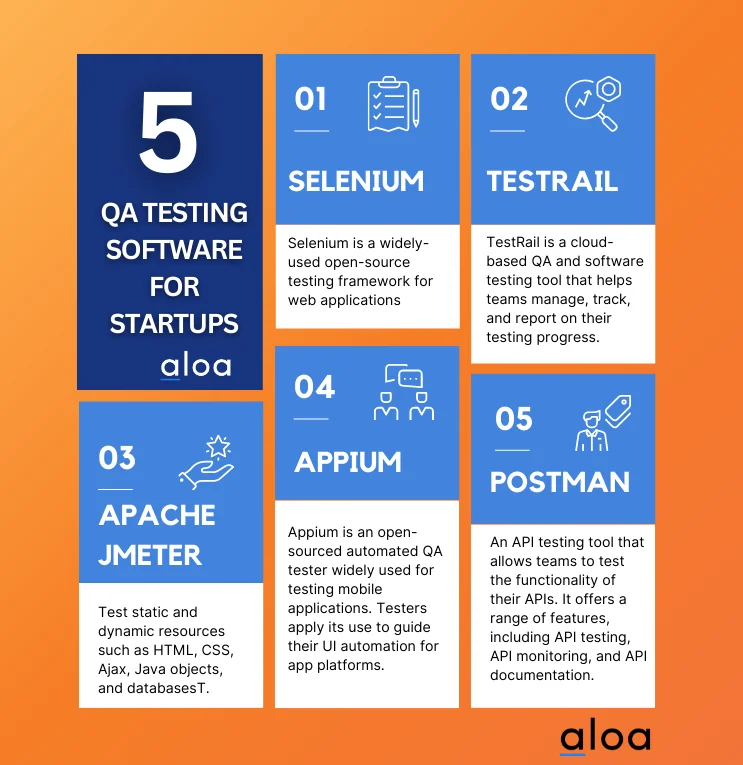
Selenium
Selenium is a widely-used open-source testing framework for web applications. It provides support for multiple browsers and can be used to test UI, functional, and integration tests. As a QA testing tool, it provides testers with a single interface to create programming language test scripts like:
- Java
- Ruby
- NodeJS
- PHP
- Python
The automated testing tool also enables users to access Selenium WebDriver, which can be used for automation testing on more than one browser, allowing users to test their applications across multiple platforms.
The IDE (integrated testing environment) is an easy-to-use browser extension to develop test cases such as custom locators and UI elements. Lastly, the Selenium Grid allows users to run tests on multiple browsers, providing an efficient and cost-effective way of testing web applications.
TestRail
TestRail is a cloud-based QA and software testing tool that helps teams manage, track, and report on their testing progress. It allows users to create tests, organize and prioritize them in an intuitive dashboard, and receive real-time reports on test results. It also offers advanced analytics capabilities, making it easier for teams to monitor their progress.
With its easy-to-use interface, TestRail makes it simple for testers to create comprehensive tests with individual steps and parameters. The software can be integrated with bug-tracking systems such as Jira, making it easier for teams to manage and update defects.
Apache JMeter
QA testers can use Apache JMeter to test static and dynamic resources such as HTML, CSS, Ajax, Java objects, and databases. It's open-source software that can be used to measure the performance of web applications by simulating a large number of users on their systems at once.
JMeter also offers built-in support for automatically generating reports based on test results. The tool is highly extensible, allowing users to develop custom plugins that can be used to extend the software's capabilities.
Appium
Appium is an open-sourced automated QA tester widely used for testing mobile applications. Testers apply its use to guide their UI automation for app platforms. The main goals Appium achieves are:
- Creating platform-specific automation capabilities across multiple standard API platforms.
- Make it easy to access the API from any programming language.
- Provide tools that make it easy for community development of Appium extensions.
Testers can QA their apps for iOS and Android, both real and virtual devices. It supports a wide variety of programming languages like Python, Java, Ruby, PHP, JavaScript, and more. It also allows testers to develop Appium tests using popular IDEs such as Visual Studio Code and Eclipse.
Postman
Postman is an API testing tool that allows teams to test the functionality of their APIs. It offers a range of features, including API testing, API monitoring, and API documentation. The API repository provides access to over 200,000 public APIs.
Postman also offers an easy-to-use interface and allows users to create automated tests for each API request, allowing teams to quickly identify potential issues. It also supports popular programming languages such as Python, JavaScript, and Java, so testers can easily integrate their testing tools with the Postman API.
These are just a few of the tools available for QA automation in 2023. With the advancement of technology, there will be more tools to help teams improve their QA processes and ensure customer satisfaction.
Benefits of Quality Assurance Testing Software
Using quality assurance testing software comes with a handful of benefits for startups and testers. If you can properly leverage the tools and resources available to you, you can save time and money while ensuring the highest product quality.
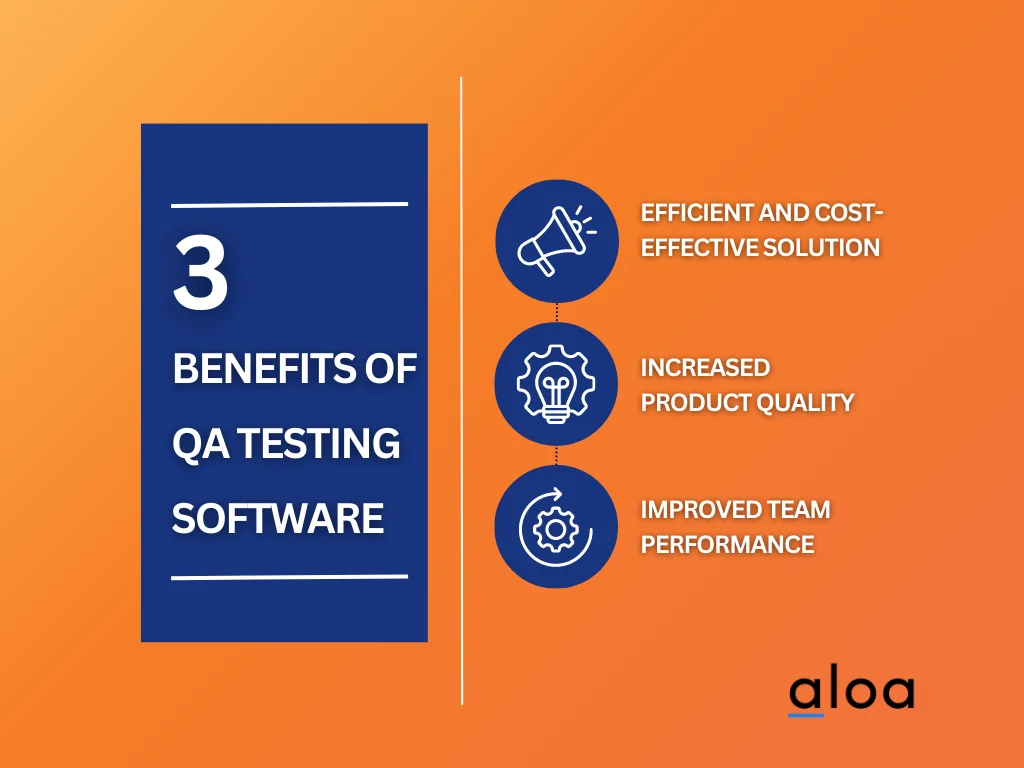
Efficient and Cost-Effective Solution
The first benefit of using QA testing software is its ability to automate tasks and tests. Automation allows testers to run tests quickly, repeatedly, and across multiple browsers, providing an efficient and cost-effective way of testing web applications. Automated testing also reduces the chances of human error, ensuring that the product is tested accurately and thoroughly.
Increased Product Quality
Using quality assurance testing software also helps to increase the overall quality of the product. Automated tests can quickly detect any issues or bugs that may arise during development, allowing teams to address them promptly and improve the user experience. With every release, testers can be sure that the product is of the highest quality.
Improved Team Performance
Using QA testing software also helps to improve team performance and collaboration. Automated tests can help testers identify potential issues quickly, allowing them to spend more time fixing any issues they find. This increased collaboration ensures that teams work together efficiently to produce a better product.
Precautions to Take When Using Quality Assurance Testing Software
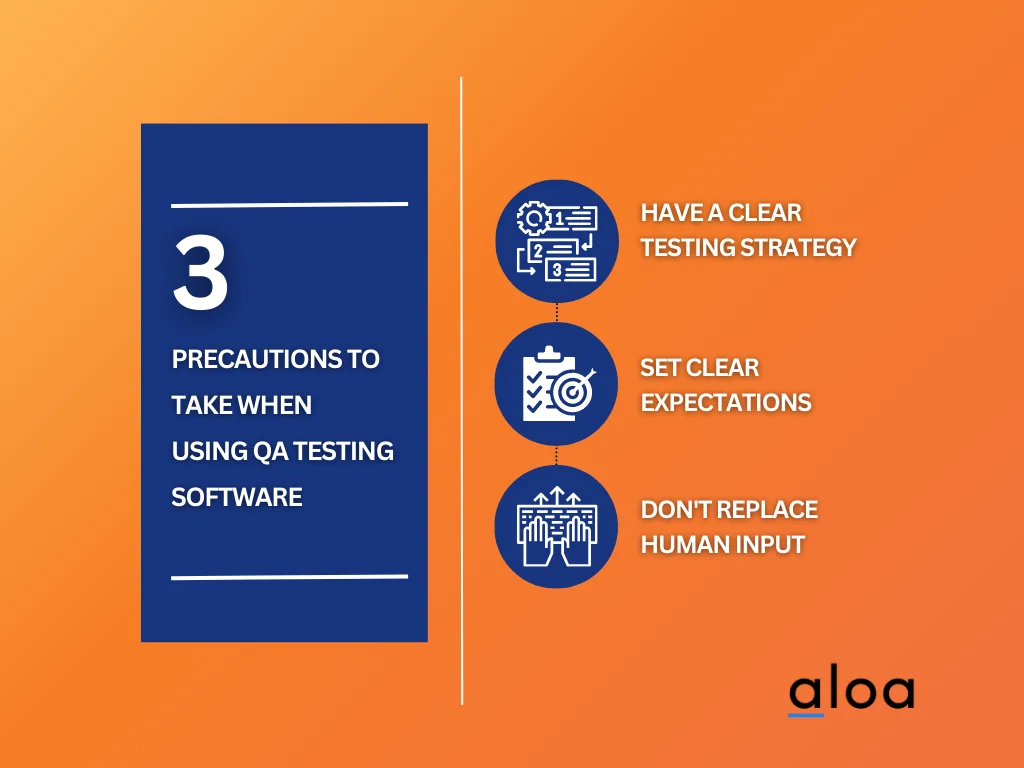
While using QA testing software does offer many benefits, there are a few precautions that you should take in order to ensure the best results.
Have A Clear Testing Strategy
When using QA testing software, it is important to have a clear and well-defined testing strategy. This will ensure that all of your tests are run properly and accurately. It is also important to ensure that your team is properly trained on the software, so they can use it effectively and efficiently.
Set Clear Expectations
It is important to set clear expectations for how the QA testing software should be used by your testers. This will ensure that everyone is familiar with its features and capabilities, as well as what to expect from it.
Don't Replace Human Input
While quality assurance testing software can automate many aspects of QA testing, human input is still necessary for several reasons. First, humans can provide valuable insights and feedback on the product's usability and user experience.
Second, humans can catch defects and errors that automated testing may miss, such as visual or aesthetic issues. Finally, humans can ensure that the product meets customer expectations and complies with industry standards, which is essential for the product's success.
Human input still remains the most critical aspect of QA testing, so it is important to keep this in mind when making use of QA software.
Key Takeaway
QA testing plays a crucial role in ensuring the quality of a product. They are responsible for identifying and addressing defects, inconsistencies, and other issues that may affect the performance or usability of a product.
Applying a QA process to your startup's software development process can enhance your ability to create cutting-edge products that set you apart from your competitors. Also, using automated software to support your QA efforts makes it easier to save time and money while ensuring the highest product quality.
To learn more about what it takes to develop an outstanding software product in a highly competitive space,reach out to [email protected] for access to valuable insights that support the success of your startup.

